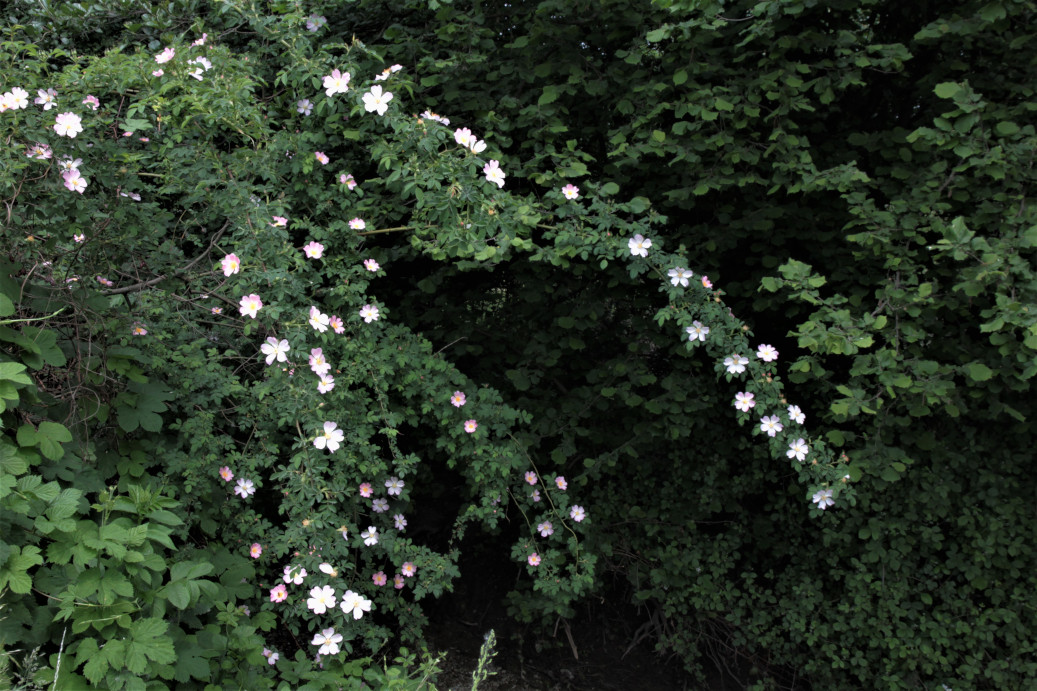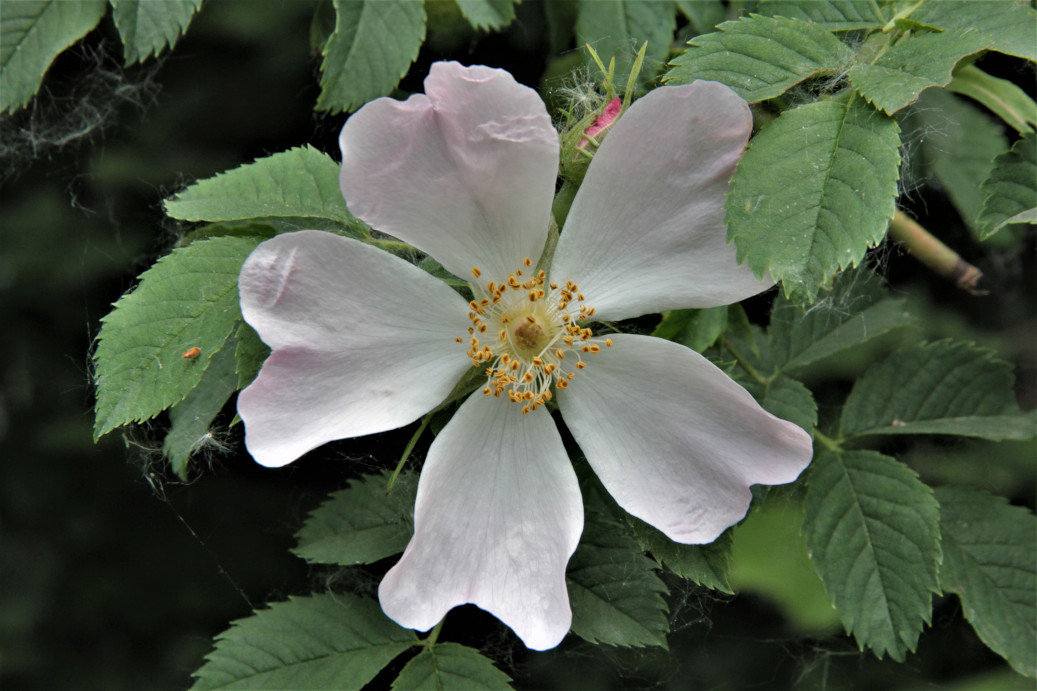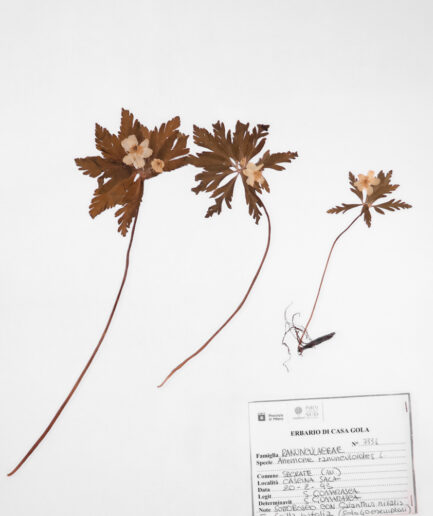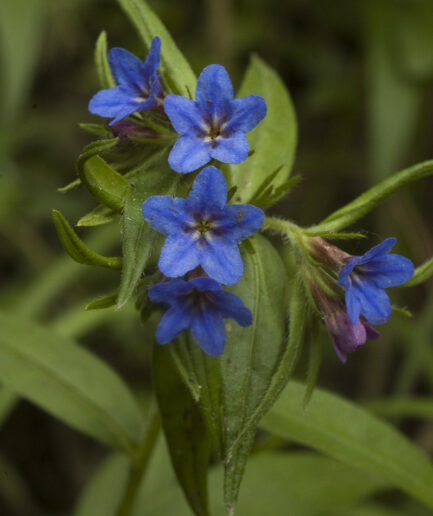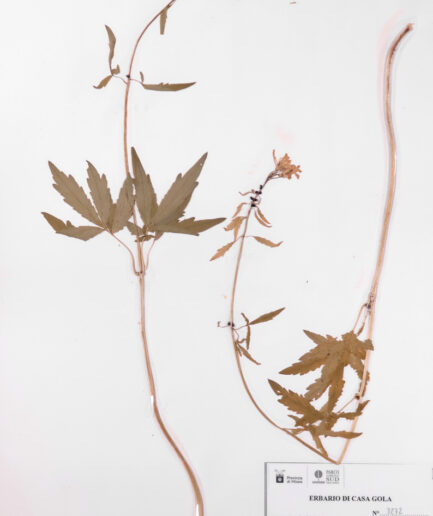Rosehip
Scientific Name: Rosa canina L.
Family: Rosaceae
MORPHOLOGY
Habit and size: Woody shrub, bushy and thorny, deciduous, with deep roots. In open environments, it appears as a rounded shrub, 1-3 m tall, with wide branching; in shrublands, it is less branched and tends to climb on surrounding shrubs.
Stem: Pendulous branches covered with robust and large thorns, bent or hooked, mostly with swollen base; green secondary branches.
Leaves: Leaves are odd-pinnate, with 2-3 pairs of leaflets at the base with lanceolate stipules, consisting of 2-3 pairs of leaflets, tender green in color, oval or ovate-elliptic, pointed, generally glabrous or slightly pubescent on the rachis, lacking glandular hairs, dentate margins.
Flowers: Flowers on glabrous peduncles, solitary or in groups of 2-3, delicately fragrant, with 5 spreading sepals and 5 white or pink petals. The sepals are connate, forming a closed cup-like receptacle containing many ovaries. Sepals, at fruit maturation, are mostly turned backward and soon caducous. It blooms from March to July.
Fruits and seeds: The fruits, called hips, ripen in autumn and are, in fact, false fruits, pear-shaped, fleshy, and glabrous, usually carried by peduncles 10-20 mm long, bright red when ripe. They contain many hard achenes covered with short rigid hairs.
DISTRIBUTION AND HABITAT
It grows throughout Italy from sea level to over 1,900 m. It grows in clearings, at the edge of woods, in degraded shrubberies, and as a pioneer shrub, in meadows, pastures, fields, and abandoned vineyards, on piles of stones.
USE
It is considered an acid herb, astringent, tonic, anti-inflammatory, antiallergic, mildly diuretic, healing, antiseptic, vasoprotective. In medicine for internal use: in case of colds, flu, gastritis, and diarrhea. The fruits are used to prepare syrup, used as a dietary supplement, especially in the diet of infants, and used by the pharmaceutical industry as a flavoring for medicines. Extracts of the fruits are added to Vitamin C tablets. The petals are useful for combating diarrhea, sore throat if squeezed, can be used to prepare a good eyewash. Some use the leaves and buds as a mild laxative and healing agent; galls rich in tannin have astringent and tonic properties.
In cosmetics, the beauty mask obtained by blending fresh hips (cut, carefully emptied, and washed several times to remove the small sharp hairs that can stick into the skin) is one of the most effective for its lightening, smoothing, and toning effect on the skin.
Before taking any plant-based product (medicinal or non-medicinal) for therapeutic or similar purposes, it is always advisable to consult your doctor.
The fruits collected after the first frost are excellent for preparing preserves and jams. Dried and macerated in brandy and sugar, they give an excellent liqueur; dried and ground, they can be used to make tea, and dried and ground into flour, they were used in ancient times to make a kind of bread. A rose left to rest for a week in grappa will give it a pink color and a delicate aroma, highly recommended in Moscato grappa.
INTERESTING FACTS
The stems of Rosa canina constitute the ideal rootstocks for cultivated roses.
Legend has it that if we can admire the beauty of the rose today, we owe it to the god of wine Bacchus, who, infatuated with a nymph, tried to conquer her, but she, fleeing, stumbled into a bush. Bush that, out of gratitude, Bacchus transformed into a rose, making it sprout splendid flowers of a delicate pink color, the color of the cheeks of his nymph.
Leaving mythology for science, we learn that the rose actually originated more than forty million years ago, as evidenced by the fossil remains of this flower found in Colorado and Oregon.
Roses were already important in antiquity where they were used in rituals, in the manufacture of cosmetics, perfumes, and in medicine.
It was the Greek poet Sappho (4th century B.C.) who defined the rose as the “queen of flowers.”
The Assyrians, it seems, were the first to discover its virtues. In Roman times, rose petals were used to make “rose dishes with brains, eggs, wine, and fish sauce.” Greeks, Romans, and Persians used different species of roses for therapeutic purposes, and in 77 A.D., Pliny mentioned as many as 32 disorders that could be treated with rose-based preparations.
The famous rose water was invented by Avicenna, a famous Persian doctor, between the 9th and 10th centuries. Persian alchemists of the 16th century produced a superior essence by distillation. The essence is a very expensive product, considering that about a ton of petals is needed to produce 300 grams of oil, which is why it is largely synthesized today. About 96% of women’s perfumes and 46% of men’s perfumes contain rose essence.
The rosehip played an important role in supplying vitamin C to British children during World War II (its fruits were called “northern oranges”), replacing the normal source of citrus (then difficult to obtain).
In the language of flowers, Rosa canina is attributed independence but also poetry.
The branches of Rosa canina often have spherical galls made of long reddish hairs, due to the sting of a hymenopteran, Rhodites rosea L.
Photo: kindly provided by Claudio Farinati


